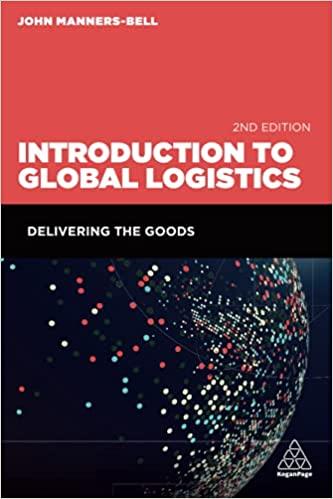Question
Top automakers dependence on steel steering planet towards climate catastrophe, environmental group says. The worlds top automakers are generating an estimated 74 million tonnes of
Top automakers dependence on steel steering planet towards climate catastrophe, environmental group says. The worlds top automakers are generating an estimated 74 million tonnes of carbon dioxide each year due to the industrys failure to decarbonise its steel supply chain, according to a new report by Greenpeace.
The automobile industry is heavily dependent on steel as a key manufacturing material and the top 16 automakers used an estimated 39-65 million tonnes of steel in 2022, the environmental advocacy group said in the report. Toyota, the worlds top automaker, used 6.3 million tonnes of steel in 2022 alone, followed by Volkswagen with 5.2 million tonnes and Hyundai-Kia with 5.2 million tonnes, according to the report released on Thursday.
That dependency has come at a price to the planet, according to Greenpeace, due to the large amount of carbon emissions in the process, pushing the worlds temperatures ever closer to the 1.5 degrees Celsius (2.7 degrees Fahrenheit) threshold that climate scientists say will spell disaster. Automakers are steering us toward climate catastrophe by failing to decarbonise their steel supply chains, Greenpeace East Asia senior analyst Wenjie Liu said. Automotive steel has a massive carbon footprint, but major automakers like Hyundai, Volkswagen, and Toyota have not disclosed their steel emissions. We need automakers to both consume less steel and to drive the transition to zero-carbon steelmaking. Steel manufacturing produced 573 million tonnes of CO2 last year, roughly the same annual output as Australia, and its heavy carbon footprint will not change without more involvement from the auto industry, which consumed 16 percent of global steel last year, Liu said. In addition to Toyota, Volkswagen, and Hyundai-Kia, the list of companies assessed by Greenpeace includes General Motors, Stellantis, Ford, Honda, Nissan, Suzuki, Geely, BMW, Renault, Mercedes-Benz, SAIC Motor, Great Wall Motor, and Mazda. None of the companies discloses the carbon emissions from its steel use and only a handful disclose their annual steel consumption, which means emissions figures are rough estimates.
The environmental watchdog acknowledged that some companies, particularly European automakers, had made efforts to decarbonise their steel supply chains, but said their goals remained modest. More effort is also needed in East Asia, home to 60 percent of the worlds steel production and few automaker- led initiatives, Greenpeace said. If they are serious about decarbonisation, by 2030, automakers must halve their emissions from steel. The first step is the disclosure of steel-related emissions, but we unfortunately havent seen this happen yet, Liu said
Automakers should also issue green steel procurement commitments, which would signal steelmakers to invest in new technology. In the longer term, automakers must achieve net zero emissions across their supply chains, both via reduced use of steel and a full transition to zero- carbon steel. The low-carbon steel market is growing due to increasing support from governments and major consumers in industries such as construction, automotive, and household appliances. The International Energy Agency (IEA) estimates that the market size of low-carbon steel will reach nearly 500 million tons by 2050. Governments are playing a significant part in the growth of the low-carbon steel market, and public procurement can make up to 20% of local and national demand for steel.
On top of demand drivers from the public sector, many companies are also pledging to procure low- carbon steel as part of their sustainability efforts. By joining initiatives such as SteelZero, companies across industries, from construction to automobile, are publicly committing to purchasing low-emission steel, which drives demand for and production of low-carbon steel. For example, Volvo has signed up for the SteelZero initiative, committing itself to stringent CO2-based steel sourcing requirements by 2030 and buying only net-zero steel by 2050. Financing Gap: The report suggests that huge gaps exist in the financing of the decarbonisation of steel and policies that provide incentives. Significant investment should be channelled to enable the zero-carbon transition. Most green finance frameworks and instruments provide support for green economic activities and green equity, leaving the low-carbon transition activities from high-emission industries such as steel behind. In China, Japan and South Korea, governments have provided substantial financial support to the steel industry, particularly for hydrogen production and use in steelmaking. Despite these efforts, there remains a significant financing gap. Current financial support is inadequate, and some resources have been directed towards false solutions, such as carbon capture and storage (CCS). Measures: To decarbonise the transport sector, various measures need to be taken, such as rapidly accelerating the phase-out of internal combustion engine vehicles, reducing the number of cars on the road, and prioritising and promoting public transportation. The decarbonisation of the automotive supply chain is a crucial part of the effort to limit global temperature rise to 1.5 degrees. Rather than solely relying on electrification, the report suggests that the industry must reduce the consumption of steel and prioritise the incorporation of zero-carbon steel into products. It is essential to foster close collaboration among automakers, steelmakers, policymakers and investors to decarbonise automotive steel. Steelmakers and investors should immediately stop investing in fossil fuel-based facilities. Investors should also actively engage with automobile companies they invest in and consider the carbon footprint of the whole value chain when making environmental, social, and governance (ESG) investment decisions. Meanwhile, governments and regulators should make automakers liable for the carbon footprint of their steel supply chain.
Identify five key stakeholders that are mentioned in the above case and discuss their reactive and (potential) proactive interests in the context of this case. (20 marks)
Step by Step Solution
There are 3 Steps involved in it
Step: 1

Get Instant Access to Expert-Tailored Solutions
See step-by-step solutions with expert insights and AI powered tools for academic success
Step: 2

Step: 3

Ace Your Homework with AI
Get the answers you need in no time with our AI-driven, step-by-step assistance
Get Started


